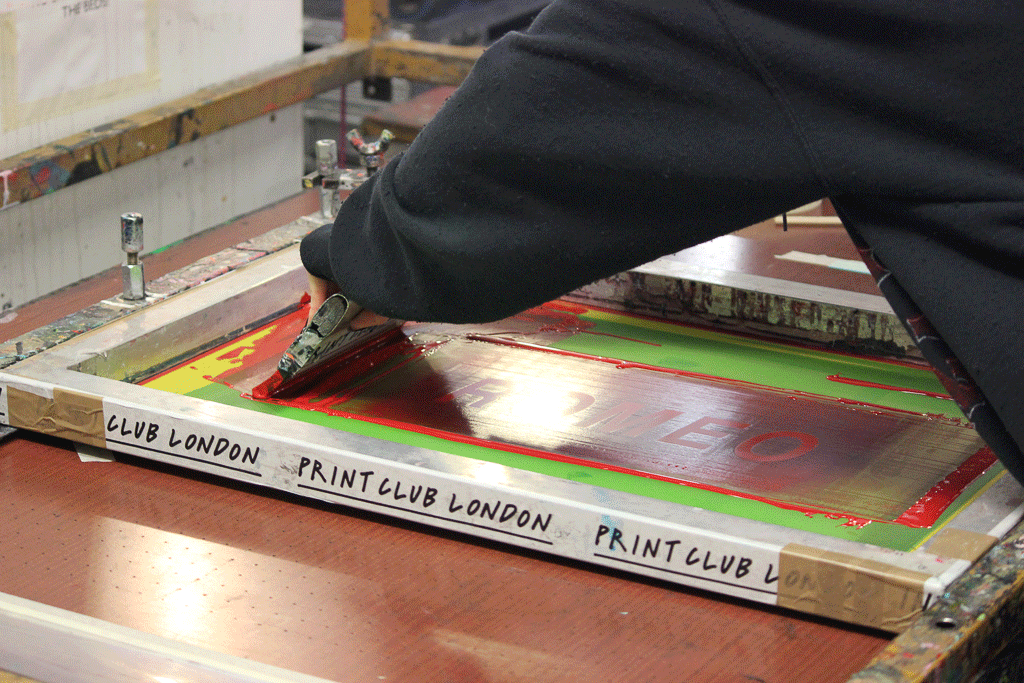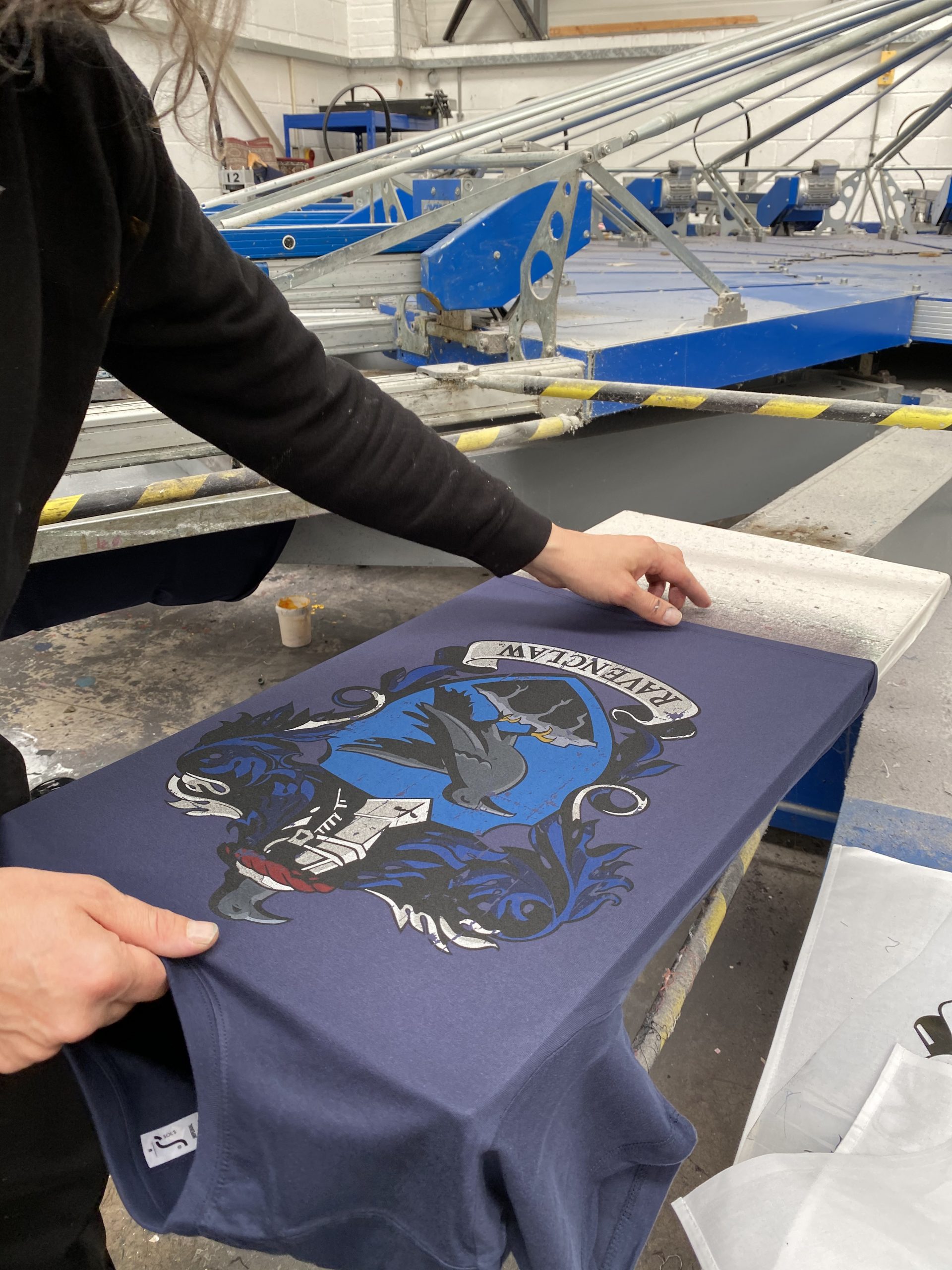ChatGPT said: The complete guide to 10:9 Design Screen Printing Texas
Wiki Article
The Important Guide to Understanding Screen Printing and Its Versatile Makes use of
Screen printing has a rich background that goes back to old times, progressing into an innovative method used throughout different markets today. This overview discovers the complexities of the screen printing process, describing its applications in advertising and marketing, home, and fashion design - 10:9 Design LLC Company. Recognizing these principles can open up imaginative potential for both industrial and creative tasks. The complying with sections will certainly disclose crucial suggestions and methods to boost one's screen printing undertakingsThe History of Screen Printing
Screen printing has origins that trace back centuries, its advancement reflects the technical and imaginative advancements of different societies. Stemming in old China, the technique was at first made use of for enhancing textiles and later spread to Japan, where it ended up being essential to Ukiyo-e woodblock printing. The technique moved to Europe in the 18th century, where it got appeal amongst craftsmens and business printers. The development of image emulsion in the 20th century changed screen printing, permitting for more intricate styles and better performance. Artists like Andy Warhol better pushed its popularity, utilizing the tool to develop iconic works that combined commercialism and fine art. By the late 20th century, screen printing had actually established itself as a functional method, utilized in vogue, advertising and marketing, and great art. Today, it remains to evolve, integrating digital technology and expanding its applications across various markets.The Screen Printing Process Explained
Screen printing changes imaginative visions right into concrete designs with a collection of exact actions. At first, an image is produced and after that transferred onto a screen, usually made of fine mesh material stretched over a structure. A light-sensitive solution is put on the screen, which is exposed to light, setting in locations not covered by the picture. After cleaning out the unhardened solution, a stencil is formed.Next, the screen is positioned over the substrate, whether it be textile, paper, or an additional material. Ink is then pushed through the open areas of the stencil using a squeegee, transferring the layout onto the substratum listed below. This procedure can be repeated for numerous colors, requiring separate screens for each and every hue. Finally, the published item is healed using warm to ensure the ink sticks effectively, leading to a resilient, vivid layout ready for use.
Types of Screen Printing Techniques

In addition, specialized techniques, such as discharge screen printing, eliminate dye from the fabric to create softer prints, while foil screen printing applies metallic aluminum foil to achieve a shiny surface (10:9 Design near me). Each strategy supplies distinct features, dealing with numerous imaginative requirements and manufacturing scales, inevitably increasing the possibilities within the screen printing domain
Applications of Screen Printing in Numerous Industries

Furthermore, the signage and advertising and marketing markets make use of screen printing for developing attractive display screens and banners. This method permits strong shades and detailed styles that catch interest. In electronic devices, screen printing is employed for applying conductive inks to circuit card, important for element links. Furthermore, the home décor market welcomes screen printing to generate distinctive styles on textiles and wall art. Generally, screen printing works as an essential tool across varied fields, boosting items with customized and visually appealing graphics.
Tips for Successful Screen Printing Projects
While embarking on a screen printing project, mindful attention to detail can substantially improve the final result. Choosing premium materials is essential; this consists of the screen, inks, and substrates. Using proper mesh counts can affect ink deposition and detail resolution. Preparation is equally crucial; extensive cleaning of screens and appropriate exposure times guarantee crisp prints.Next off, precise registration is crucial for multi-color prints. Using positioning tools can assist accomplish accurate layering. Furthermore, screening prints on scrap products before manufacturing helps identify potential concerns without squandering resources.

Regularly Asked Questions
What Products Are Ideal for Screen Printing on Material?
Cotton and polyester blends are ideal for screen printing on textile as a result of their resilience and ink absorption. Additionally, specialty materials like silk or canvas can produce unique structures and finishes, improving the total design top quality.Just how Do I Clean and Maintain Screen Printing Devices?
To maintain and cleanse screen printing tools, one need to regularly clean screens with appropriate solvents, evaluate mops for wear, lube moving components, and store all products in a dry, dust-free setting to extend their lifespan.What Are the Ecological Influences of Screen Printing?
Screen printing can have significant environmental effects, consisting of chemical waste from inks and solvents, water usage during cleansing processes, and energy intake. Lasting methods and environment-friendly products are essential for reducing these negative effects.Can Screen Printing Be Done in your home Successfully?
Screen printing can be successfully done at home with the appropriate products and methods. Enthusiasts can produce top quality prints, though success depends on their skill degree, devices, and understanding of the procedure entailed.
What Are the Costs Associated With Starting a Display Printing Business?

Starting a screen printing service entails expenses for tools, products, and workspace. First expenditures normally range from a couple of hundred to several thousand bucks, depending upon the range, quality of equipment, and desired production ability.
Screen printing has a rich background that dates back to ancient times, progressing right into a sophisticated technique used throughout numerous sectors today. An additional technique, rotating screen printing, utilizes round displays, facilitating continuous printing on textile rolls, therefore enhancing performance for massive productions. Additionally, specialized strategies, such as discharge screen printing, get rid of color from the textile to develop softer prints, while aluminum foil screen printing applies metal foil to attain a glossy finish. In the fashion field, screen printing is extensively utilized to develop vibrant designs on clothing, enabling brand names to display their special styles. Cotton and polyester blends are excellent for screen printing on fabric due to their resilience and ink absorption.
Report this wiki page